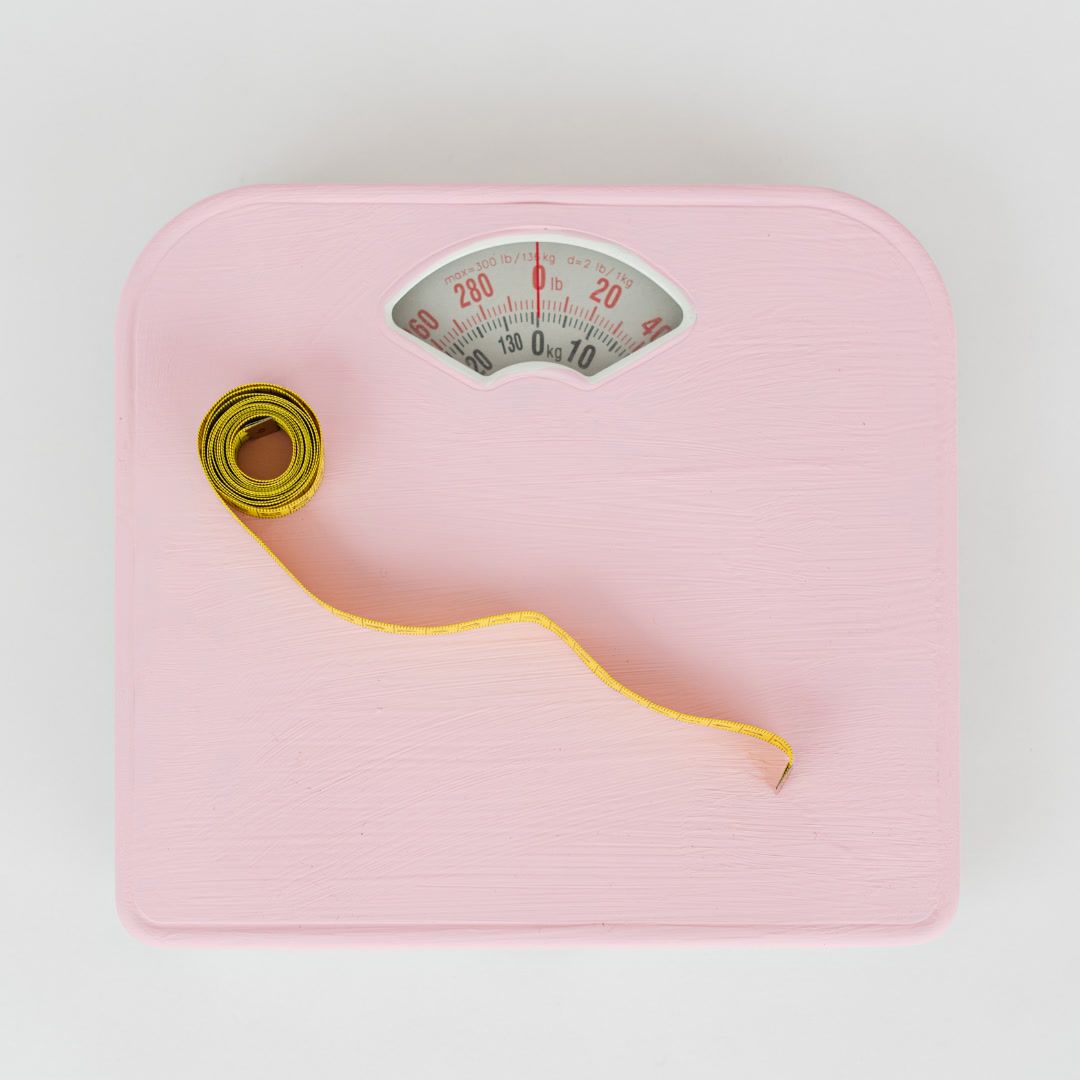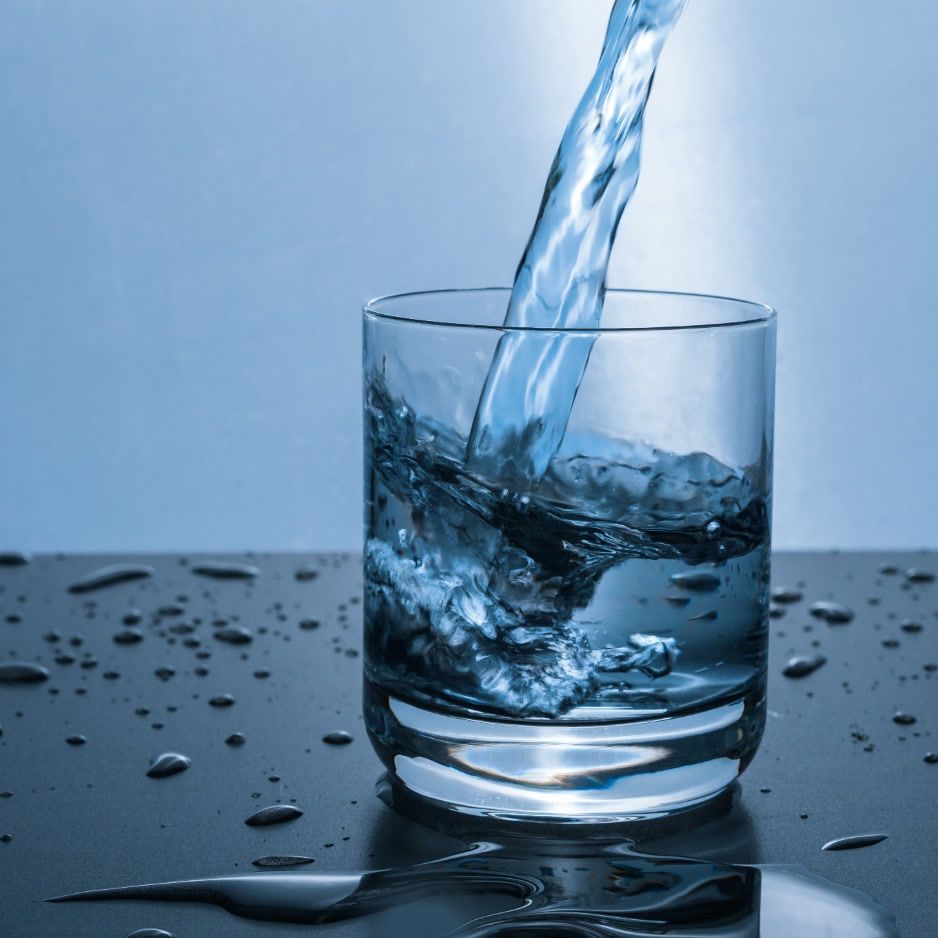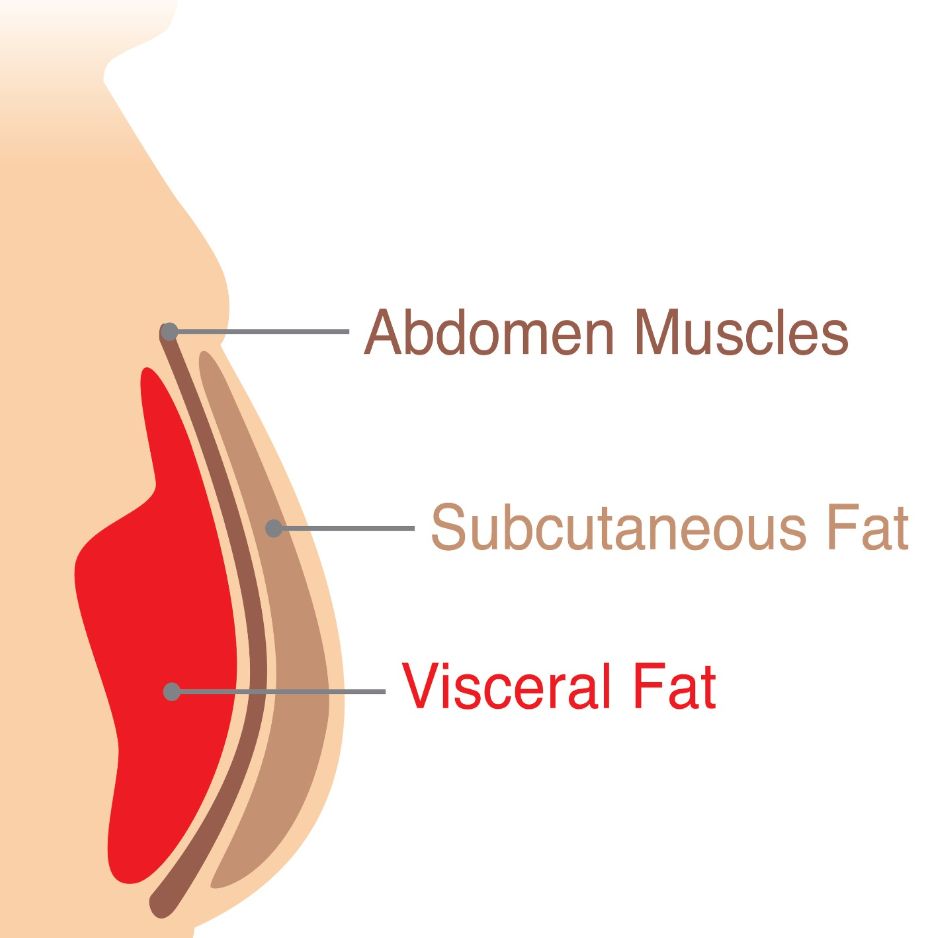Foam Rolling After Workout: Benefits and 10-Minute Routine
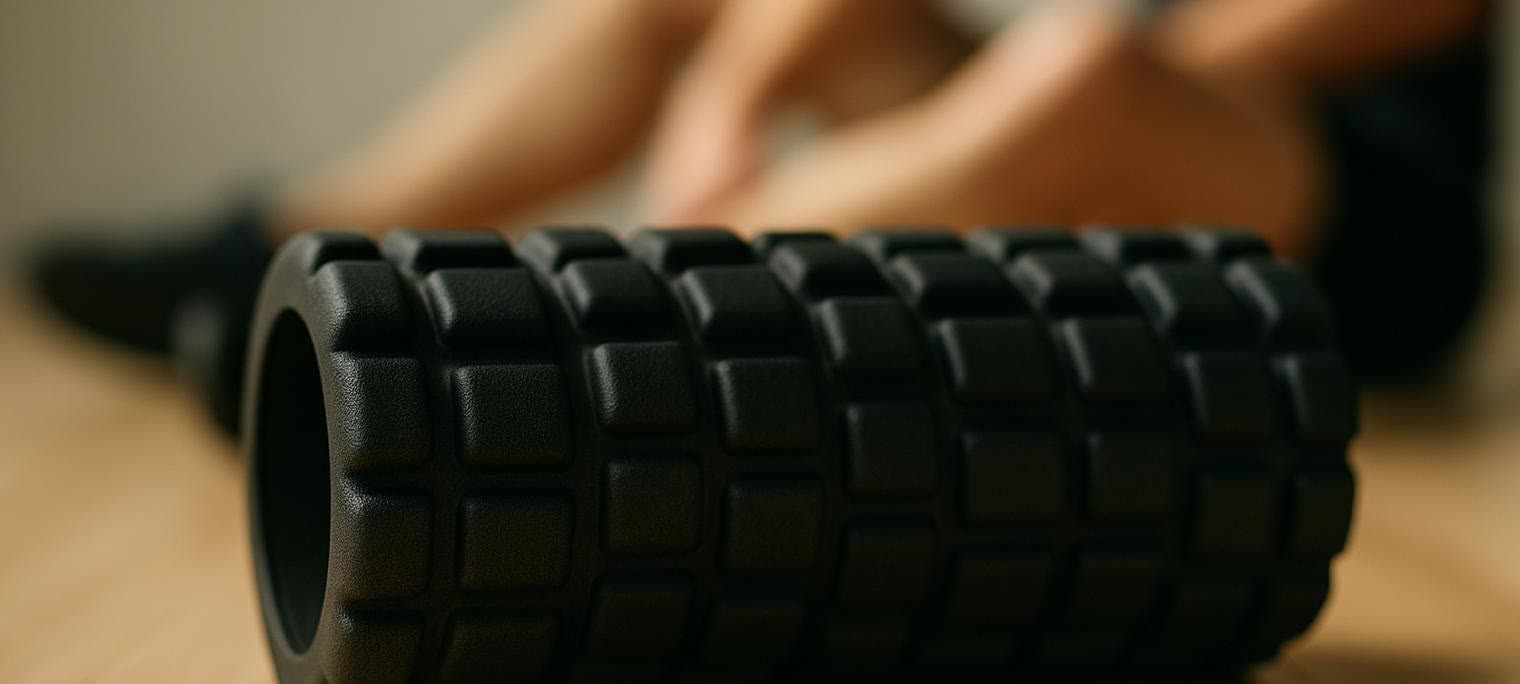
Foam Rolling After Workout: Benefits & 10-Minute Routine
Quick Takeaways
- Foam rolling immediately after exercise and again 24 hours later can cut muscle soreness by roughly 30–50% and speed sprint- and strength-performance recovery by 2–4% (MacDonald 2015; Wiewelhove 2019).
- A 10-minute routine is enough to hit the major post-workout hotspots (quads, hamstrings, calves, glutes, back).
- Use a pain-pressure scale of 3–5/10—uncomfortable but not excruciating—to maximize blood flow and neural benefits without tissue irritation.
- Choose the right density: soft rollers for beginners or sore days, medium/high-density grid rollers when you need deeper release.
- Avoid rolling over joints or acute injuries; older adults and people with osteoporosis should stick to light pressure and skip the spine.
Tracking lean-mass retention is a key indicator of effective recovery. Learn about the cost of a DEXA scan to see how you can measure it.
Why Foam Roll After a Workout?
Delayed-onset muscle soreness (DOMS) peaks 24–48 hours after hard training. Besides feeling uncomfortable, DOMS can reduce sprint speed, power production, and range of motion. Foam rolling—technically self-myofascial release (SMR)—offers a fast, inexpensive strategy to blunt those effects.
Evidence-Backed Benefits
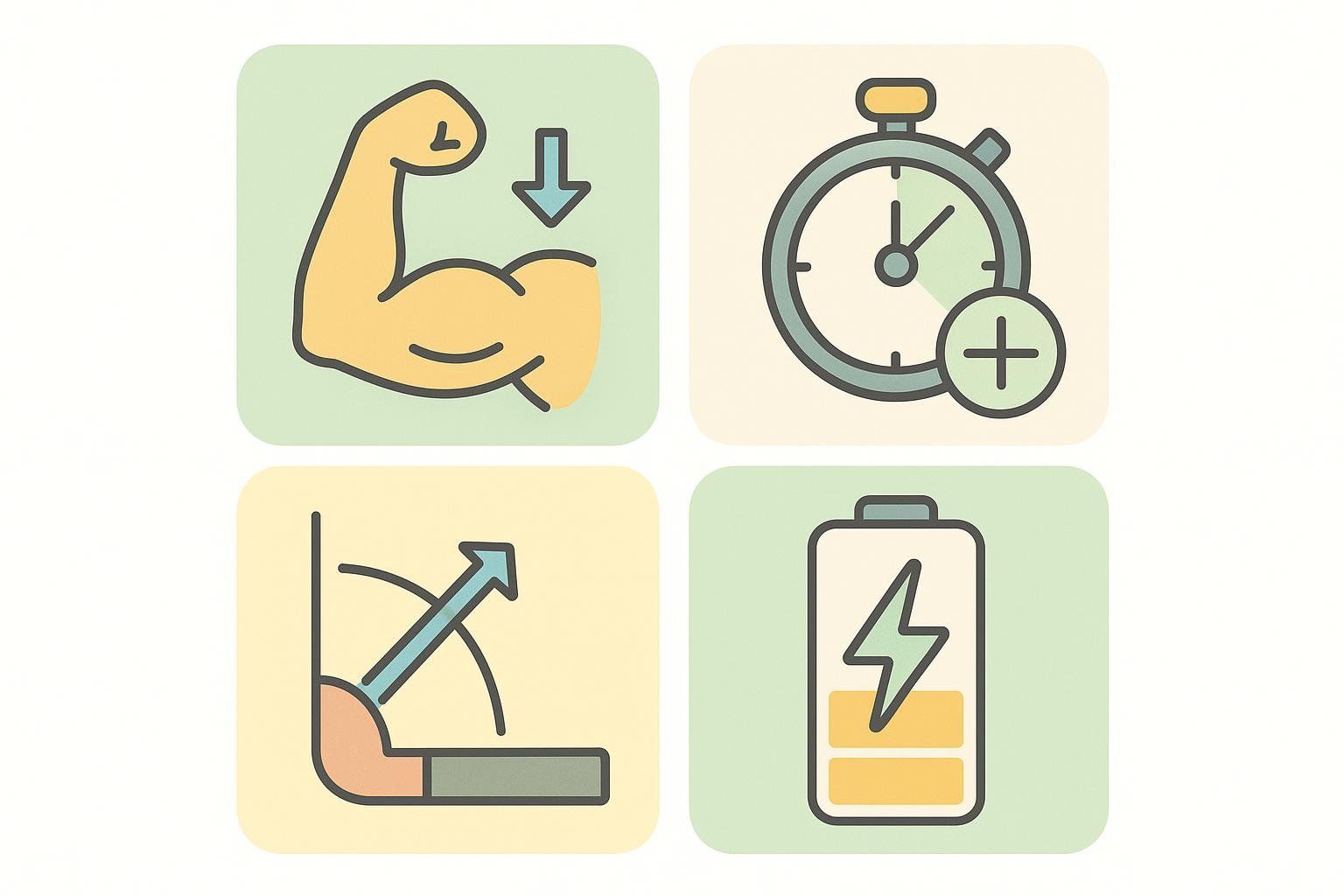
| Benefit | Evidence | Practical Meaning |
|---|---|---|
| ↓ Muscle soreness (30–50%) | Controlled squat study showed significant DOMS reduction (MacDonald 2015); meta-analysis confirms medium pain effect (Wiewelhove 2019) | Feel less achy the next day |
| ↑ Sprint & strength recovery (2–4%) | Same sources as above | Maintain power on back-to-back training days |
| ↑ Range of motion (~4%) | Pre/post-rolling data across 21 studies | Modest increase in joint mobility |
| ↓ Perceived fatigue | Multiple trials report lower RPE scores post-rolling | Workouts may feel less strenuous |
How It Works (Quick Science)
Foam rolling applies mechanical pressure that:
- Increases localized blood flow → flushes metabolites.
- Stimulates mechanoreceptors → down-regulates pain signals.
- Creates shear stress in fascia → restores tissue glide and flexibility.
- Triggers parasympathetic activity → lowers nervous-system tension.
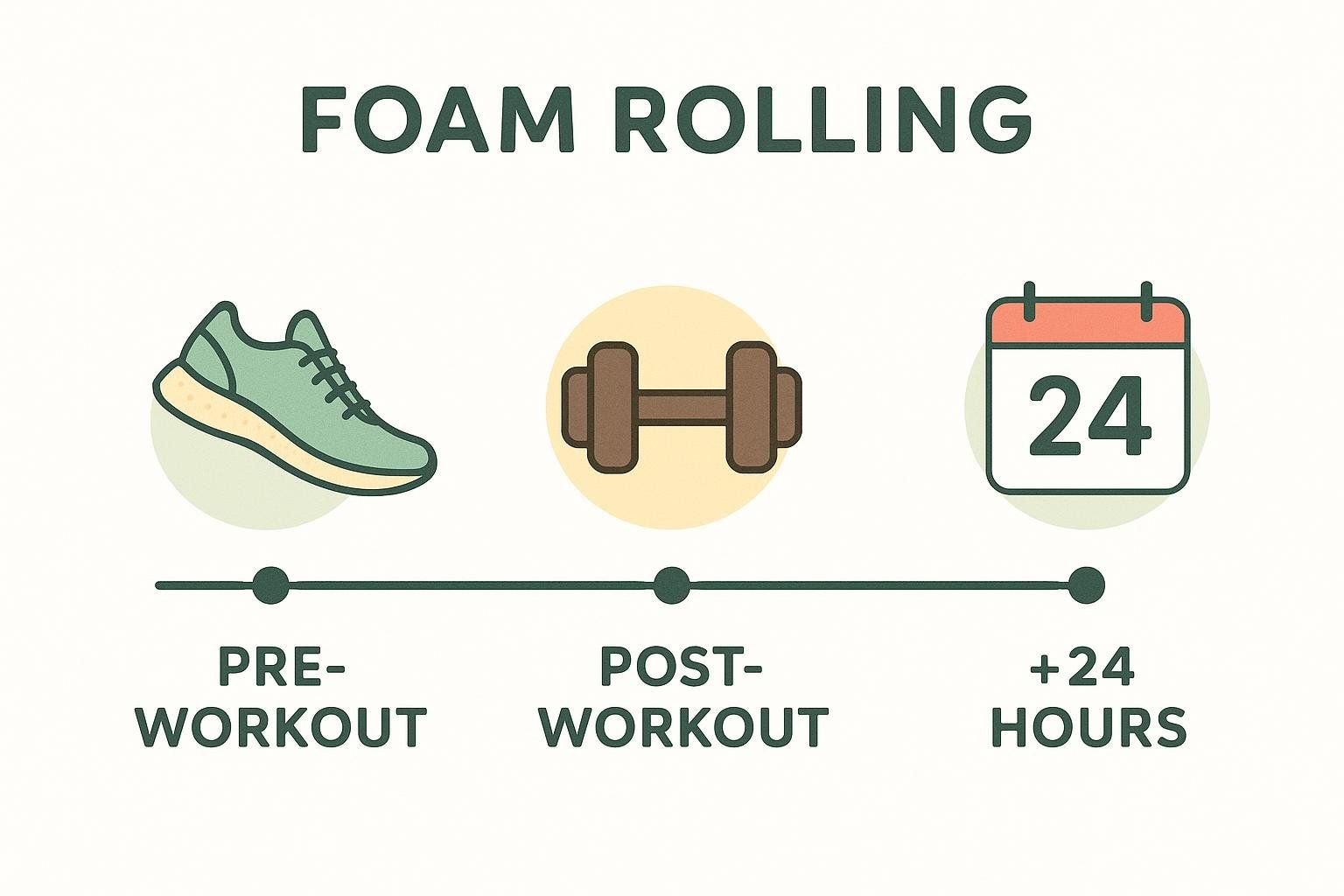
When Should You Foam Roll?
| Timing | Goal | Recommended Muscles | Duration |
|---|---|---|---|
| Immediately post-workout | Jump-start recovery, limit inflammation | Big movers used in session | 5–10 min |
| +24 hours | Blunt DOMS peak | Same muscles + any tight spots | 5 min |
| Pre-workout (optional) | Boost flexibility, body awareness | Limiting areas (e.g., hip flexors) | 3–5 min |
The 10-Minute Post-Workout Foam Rolling Routine
Grab a timer and roll through the sequence below. Spend 30 seconds per side.
- Calves – Sit with the roller under your ankles; cross one leg for extra pressure. Slowly glide from ankle to just below the knee, pausing 2–3 seconds on tight spots.
- Hamstrings – Place the roller beneath your hamstrings and lift your hips with your hands. Roll from just above the knee up to the glute fold in controlled strokes; linger briefly on tender areas.
- Quads – Flip into a forearm plank with the roller under your thighs. Sweep from just above the kneecap to the hip flexors, moving back and forth and holding knots for a breath.
- Glutes & Piriformis – Sit on the roller with one ankle crossed over the opposite knee. Pivot slowly to massage from the top of the glute to the outside of the hip, pausing where it feels tight.
- IT Band – Lie on your side with the roller under the outer thigh. Progress from just above the knee to the top of the hip in slow passes; hold on any particularly sensitive spots for 10–15 seconds to allow the tissue to release.
- Upper Back (Thoracic Spine) – Lie on your back with the roller at mid-spine and hug your arms. Roll segment by segment toward the top of your shoulder blades—stop there, do not roll onto your lower back or neck; pause on stiff spots.
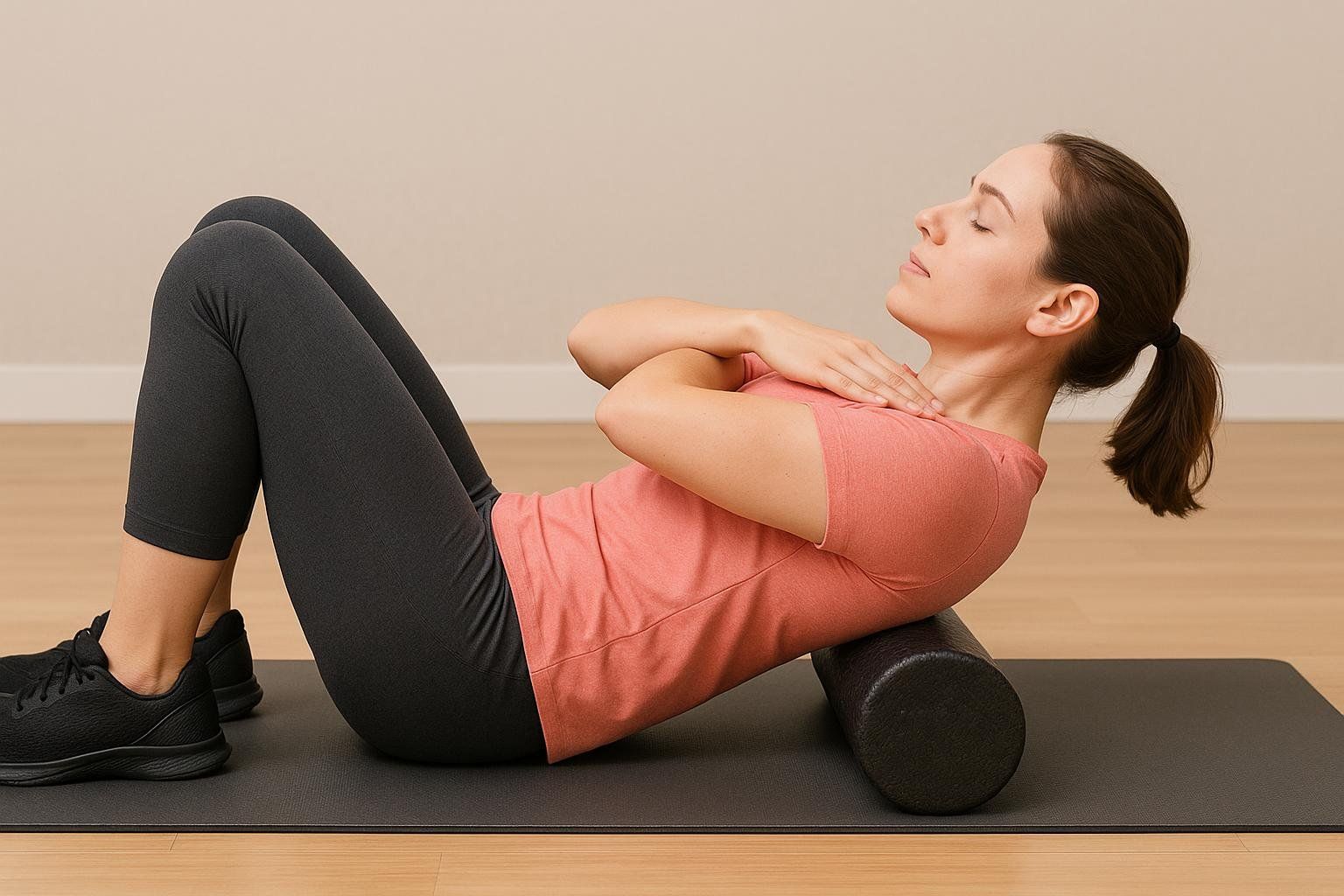
Routine Customizations
- Mike (Soccer) – After the main routine, add adductors and hip flexors for 30 seconds per side each. Roll slowly along the inner thigh and front hip, pausing on tender points.
- Sarah (Desk Warrior) – After rolling your upper back, perform 3–5 thoracic extensions: with the roller at mid-back, gently arch over it and hold for a slow breath.
- Karen (50+ Runner) – Swap to a softer roller, limit IT-band pressure, and focus on gentle, slow passes over the calves for an extra 30 seconds per side.
Choosing the Right Foam Roller
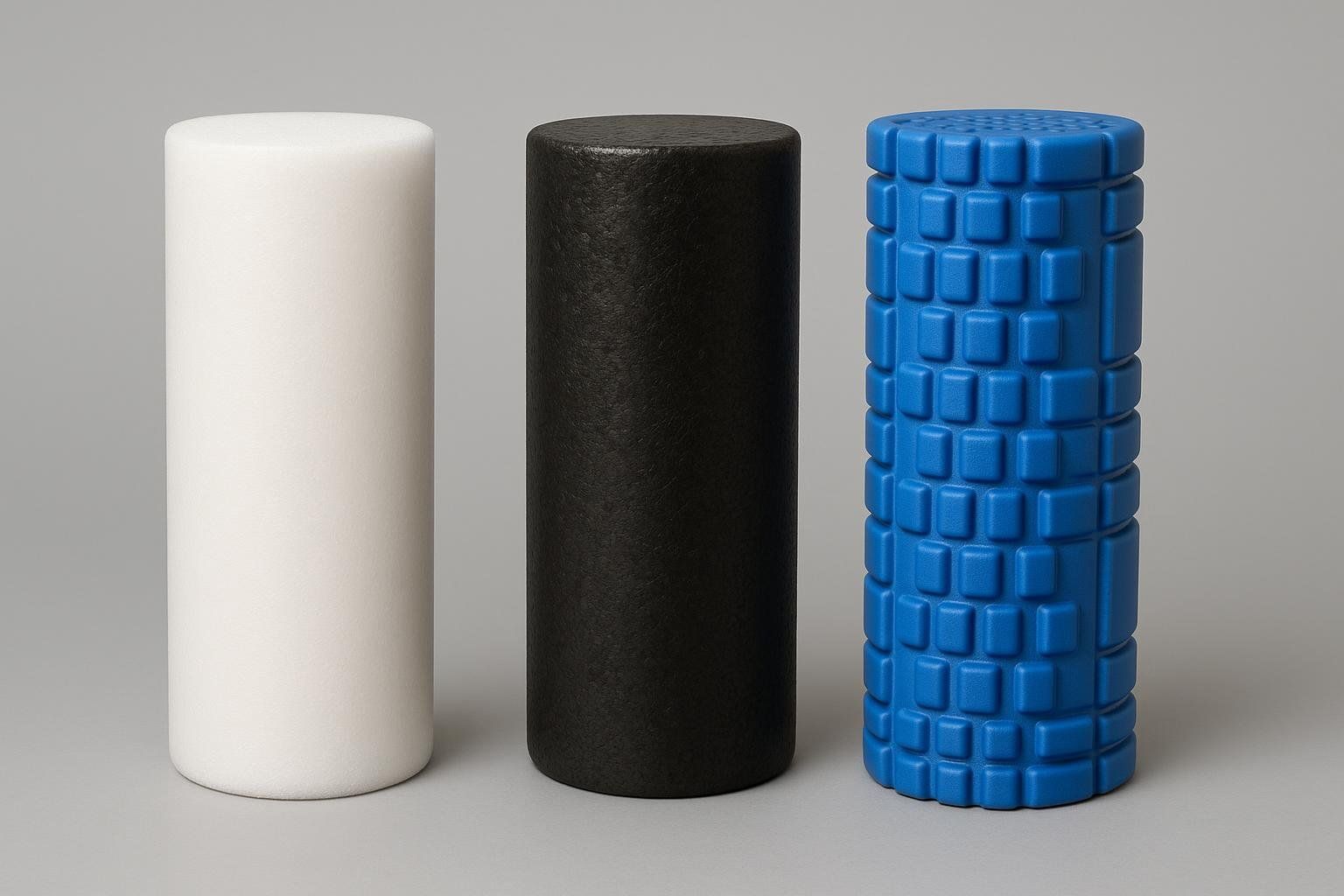
| Density | Who It’s For | Pros | Cons |
|---|---|---|---|
| Soft | Beginners, sensitive areas | Comfortable, low pain | Less deep release |
| Medium (EPP) | Most users | Balance of comfort & depth | Wears out quicker |
| High-Density (EVA) | Experienced athletes | Deep tissue, durable | Can feel intense |
| Grid / Textured | Targeting stubborn knots | Point pressure penetrates fascia | Not ideal for spine |
Tip: Aim for a 3–5/10 pain scale. Too little pressure = no benefit; too much can cause guarding.
Safety & Contraindications
- Skip acute injuries, bruises, varicose veins, or healing surgeries.
- People with severe osteoporosis or on blood thinners should consult their physician.
- Never roll directly over joints or the lower back. A foam roller is too broad to safely target the neck or muscles directly alongside the spine; a more precise tool like a tennis ball is a better option for these areas.
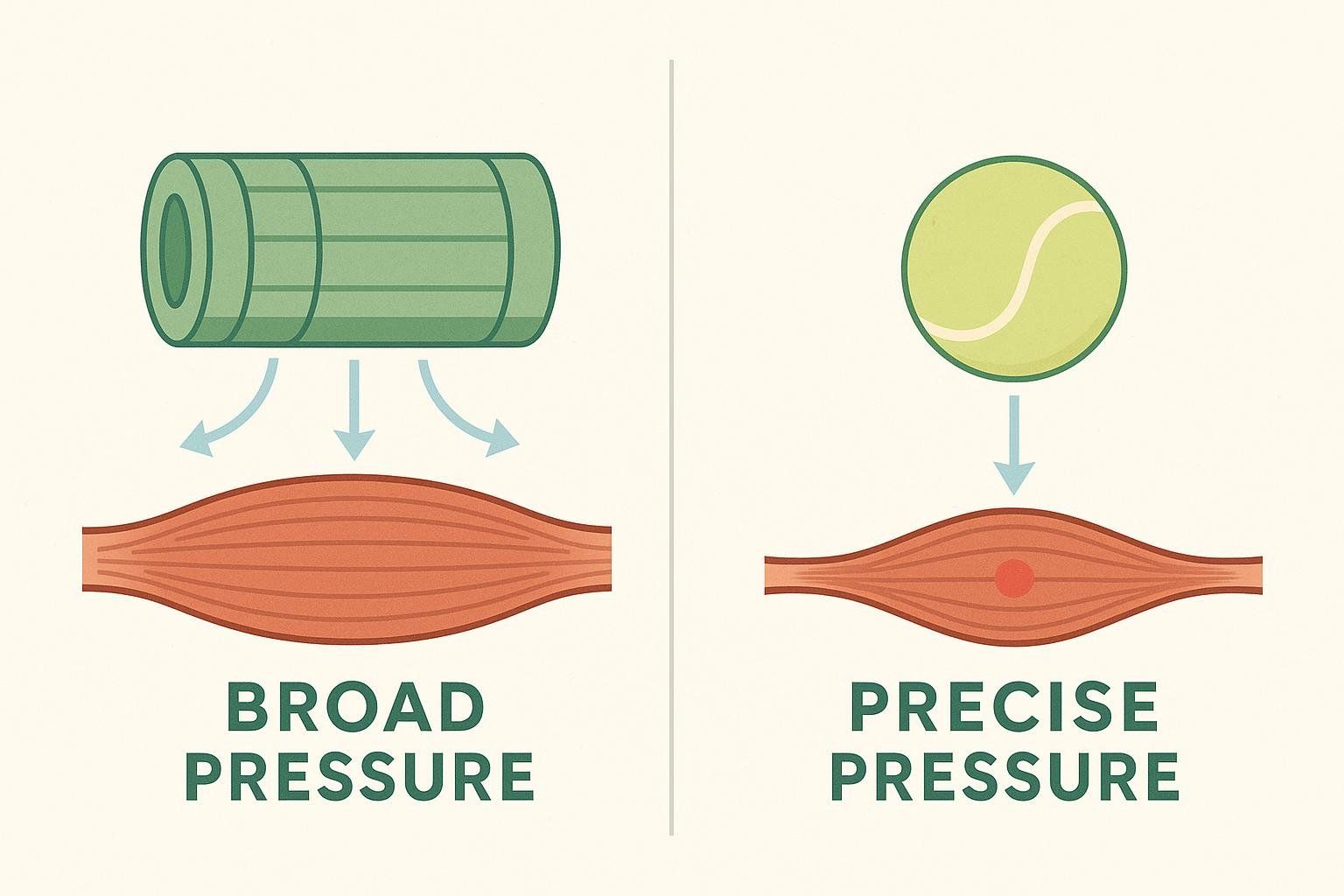
If in doubt, start gently and increase pressure gradually.
Frequently Asked Questions
How long should you foam roll after exercise?
Most studies show benefits with 5–20 minutes total volume split across muscle groups. The sweet spot for daily athletes is about 10 minutes post-workout plus a 5-minute maintenance session the next day (MacDonald 2015).
Can foam rolling replace stretching?
They complement each other. Rolling improves tissue quality and neural tone, while stretching elongates muscle fibers. Do both if time allows.
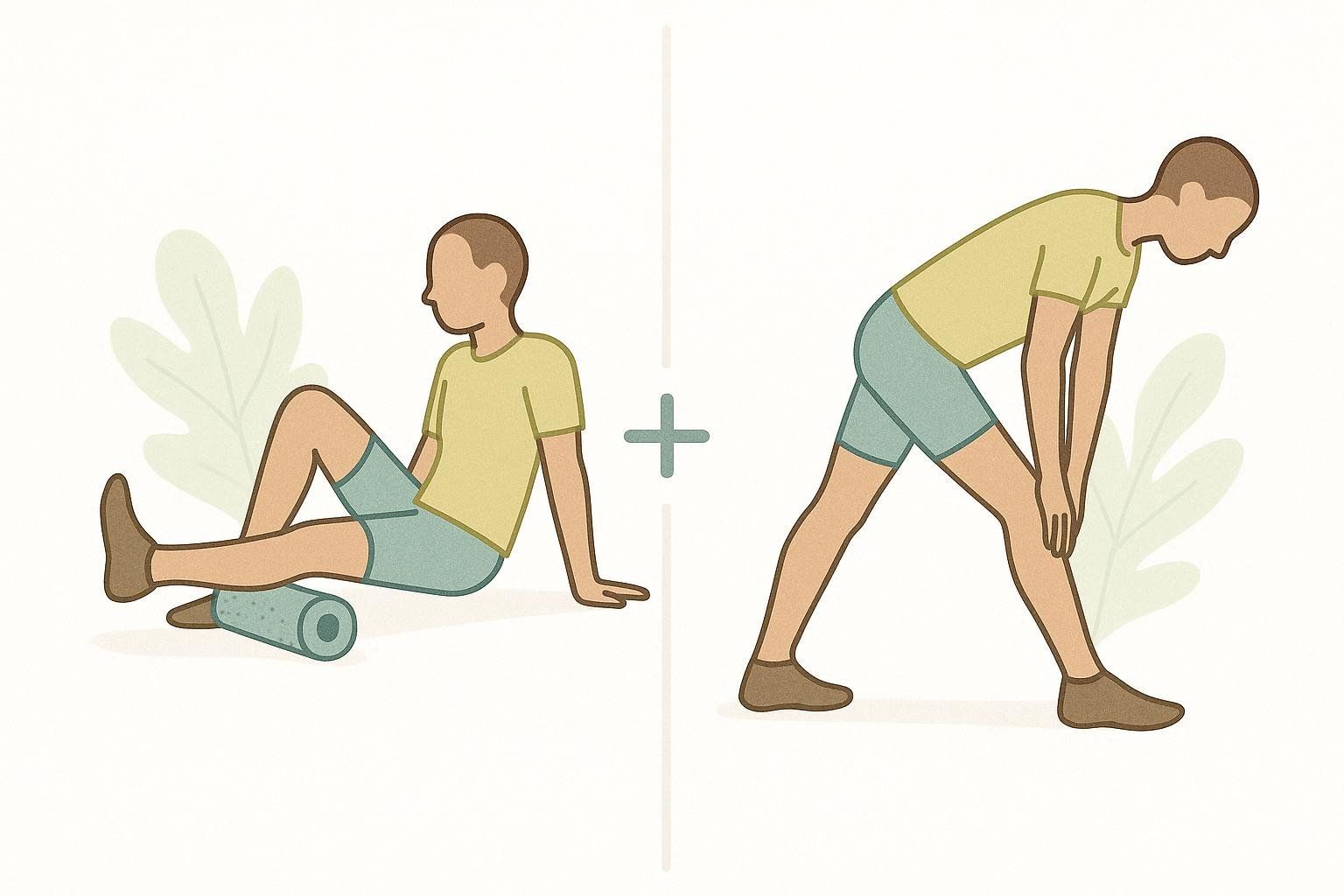
Does it matter which muscles I roll?
Prioritize the muscles you just taxed and any areas chronically tight. Whole-body rolling is fine but not mandatory.
Is foam rolling better than massage?
A professional massage can reach deeper tissues, but foam rolling wins on cost, convenience, and frequency. Using both yields the best of both worlds.
Next Steps: Measure Your Recovery Gains
Feeling better is great—seeing progress is even better. Learn about the cost of a DEXA scan and see how tracking lean mass helps fine-tune your training.
For more recovery know-how, check out:
- The Importance of Rest Days and Active Recovery
- Mobility Exercises for Office Workers & Runners
- Muscle Soreness After Workout: Causes, Relief & Prevention
Keep rolling, stay limber, and let the science guide your gains!
